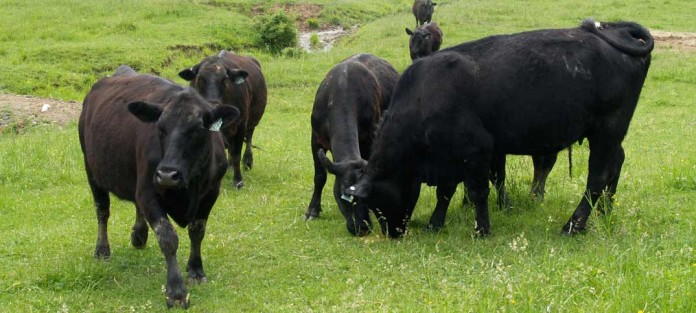According to the U.S. Drought Monitor, many areas are experiencing abnormally dry to moderate drought conditions — and the impact on crops is obvious.
One farmer last week told me he had to drive around a lot in his fields to make round bales. All crops are showing signs of stress, including pasture grasses and forages, but the weeds seem to be growing well through these dry conditions.
What can a manager do given the current situation?
Back to basics
Basic pasture management principles are as important, if not more so, during periods of dry weather.
Maintaining good fertility and soil pH can help grazing plants survive drought conditions. Soils that have adequate fertility and are at the ideal pH will go a long way in helping plants maintain a healthy root system, which is important for capturing nutrients, minimizing soil loss, and photosynthesis.
If you decide to apply nitrogen fertilizer, use a form that will not volatilize if rainfall doesn’t occur shortly following application. Nitrogen fertilizer can benefit plants even if rainfall doesn’t occur for several weeks.
But be cautious when using nitrogen fertilizer during drought conditions as this practice can potentially lead to nitrate poisoning.
Don’t overgraze
Also, don’t overgraze your pastures. It’s critical that plants be grazed to the proper stubble height and be allowed to rest until they reach the proper grazing height. Plants should be between 6 and 8 inches tall when grazed. This is necessary to maintain plant health and diversity in a pasture.
The ‘take half, leave half’ rule applies at all times when grazing — and especially during times of drought.
Don’t open up the gates
One of the worst things to do during a drought is to open up the gates and let livestock graze wherever and whenever they choose. Doing so prevents photosynthesis to occur and may cause long-term damage to the plants.
Improve grazing efficiency
If you have large grazing paddocks, it may be helpful to subdivide them to improve forage utilization and increase the rest period. Look for other areas that are not normally grazed, such as hay that is short, but adequate for grazing, crop residue, or farm roads that are normally mowed.
Reduce the number of cows grazing. By drying off cows, the forage demand is reduced. The grazing can also be reduced by limiting the time spent grazing by keeping them in an abuse area when they are not grazing.
Closely monitor body condition of cows during drought conditions. When finishing animals on pasture, give them first choice on the best pasture and after moving them to a new pasture, let the dry animals clean up after them.
Feed hay or grain
Feed these in an area that will benefit from the extra nutrients provided by these feeds. Another option is to cross fence the pastures and start feeding the hay or grain on pasture to extend the grazing and spread the nutrients over more acres.
If you are experiencing drought like conditions and pasture growth is minimal, consider the options to help maintain the stand and have it in a more favorable condition when rainfall resumes.













